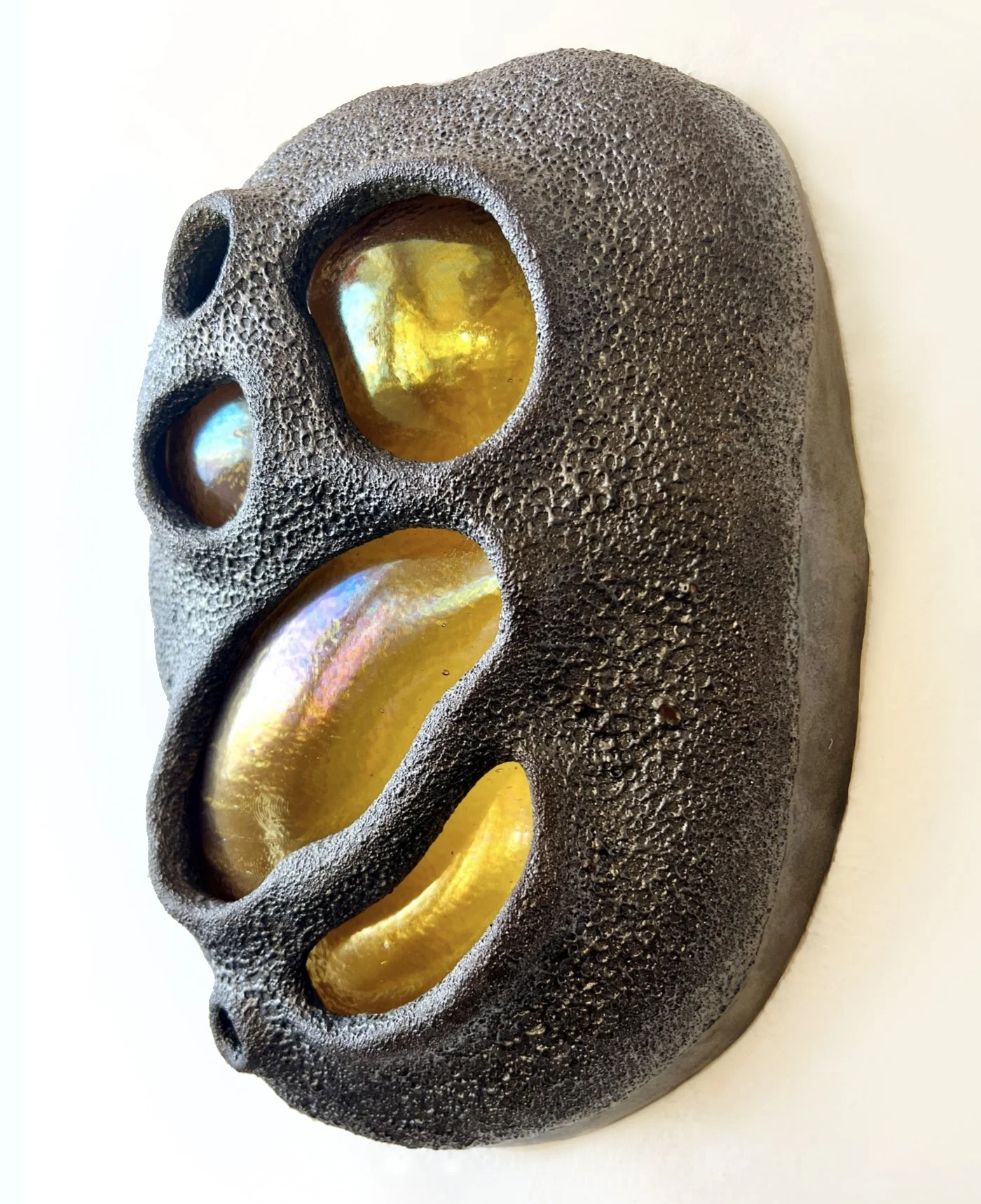Kelly Witmer: Morphologies
Nov 6 – Dec 13, 2025
Satchel Projects is delighted to present Morphologies, an exhibition of recent works by LA / Joshua Tree–based artist Kelly Witmer, on view from November 6 through December 11, 2025. This will be the artist’s debut solo show in New York. An opening reception will be held on Thursday, November 6 from 6–8 PM.
Using an intuitive, process-based approach, Kelly Witmer explores material meaning and psychological form through the interplay of clay, glass, fur, and synthetic hair. The works in Morphologies feel both ancient and otherworldly — part relic, part dream fragment. Evocative of bodily forms and biological processes, these sculptures inhabit a space where function is mysterious and desire is tactile.
Through slumped forms, oozing textures, and surprising material juxtapositions, Witmer coaxes a sense of personality — almost a “being” — out of elemental matter, blurring the line between object and entity. These are not passive sculptures; they seem to breathe, to want, to protect or repel, often taking on the sense of masks or shields — protective yet vulnerable, defensive yet strangely intimate.
Witmer describes her works as “hypothetical three-dimensional portraits,” hinting at the human while borrowing from the animal. Sometimes genderless, sometimes fluid, sometimes steadfastly male or female, they speak to what remains — what we leave behind to tell our story to our future selves. Her interest in relics that embody the core of human experience — birth, death, love, hunger, joy, and grief — infuses the work with a primal emotional charge. These wall sculptures conjure humanoid forms that occupy an uncanny space: familiar enough to suggest human presence, yet infused with strangeness, existing as speculative evolutionary paths or mythological beings. They invite contemplation of adaptability and transformation in an uncertain future.
Central to Witmer’s process is a collaboration with gravity itself. By slumping glass and ceramic forms in the kiln, she allows weight and heat to distort the materials, giving the work a softened, almost bodily sag. These drooping, organic curves hint at vulnerability, transformation, and decay — making each piece feel animated by internal forces. The surfaces further express this tension: some are mottled or pitted, suggesting skin, stone, or internal tissue, while others gleam with a glossy, slick finish. The tactility of these surfaces — whether rough and porous or smooth and reflective — heightens the viewer’s sensory engagement, inviting touch while also provoking discomfort.
The recurring use of hair and fur — materials loaded with associations of gender, mythology, status, and beauty — deepens this tension. Hair spilling from ceramic orifices oscillates between allure and the grotesque, its detached state evoking reliquaries or cherished mementos. The fur, salvaged from vintage coats, adds a haunting poignancy while recalling ritual masks that embody animal spirits. These materials complicate notions of adornment and decay, imbuing the sculptures with an eerie tenderness.
The stress of high temperatures in the kiln can cause unexpected splits, cracks, or fissures in the ceramic. These imperfections Witmer chooses not to discard but to repair by hand, using silver and gold leaf, in a process reminiscent of Japanese kintsugi. What may have been abandoned is elevated into a site of intimacy and resilience. Rather than conceal flaws, Witmer incorporates them into the work’s identity, embracing the fractures as part of the work’s evolution, a result of the forces that created them.
While Witmer’s work can be seen in relation to Surrealism — particularly the biomorphic abstraction of Hans Arp and the material subversions of Meret Oppenheim — her practice also draws deeply from a lineage of women artists who have investigated the body, psychology, and craft. Echoes of Kiki Smith’s corporeal storytelling, Louise Bourgeois’s emotional architectures, Lee Bontecou’s sci-fi femininity, Eva Hesse’s material vulnerability, and Christina Ramberg’s restrained yet fetishized forms all reverberate in Morphologies. Like these artists, Witmer challenges the viewer to confront ambiguity, embodiment, and the subconscious through form and texture.
“The pieces suggest a protective impulse,” says Witmer, “but one that’s complicated — soft, seductive, absurd.” In her hands, a vessel might sprout synthetic tendrils; a hard ceramic shell might erupt in plush tufts of fur. These contradictions are central to the work’s power, inviting viewers into an uneasy tenderness, where beauty flirts with the grotesque and the self is always in flux.















